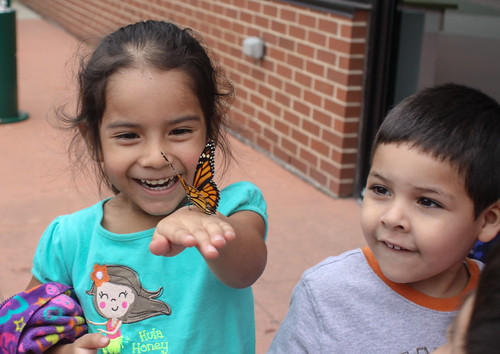
Last month, beautiful monarch butterflies floated across Chicago’s skyline as a part of their annual migration. During this year’s journey, they found more milkweed plants in several places along their paths because of an innovative program that connects urban communities with nature.
Area school kids, their families and teachers involved in an innovative project were thrilled: they had planted milkweeds in schoolyards and home gardens to attract more monarchs to the city … and it worked. Many of the families are originally from Michoacan, Mexico, where the butterflies spend the winter.
Tapping into the connectedness that Chicago’s immigrant communities feel about their country of origin—where the insect starts its migration—has proven to be a successful foundation for increasing environmental awareness. The families are excited to learn how to boost the monarch populations by planting milkweeds in urban areas such as Chicago.
This project was established by the Forest Service International Programs and highlights the importance of protecting species that migrate across international borders. International Programs addresses many critical environmental issues, including the conservation of migratory habitat overseas.
The monarch work in Chicago is done in partnership with El Valor, a social services agency which works with Latino families throughout that city. Goals include connecting urban families with nature through hands-on activities right in the local communities.
After planting milkweed for the insects, kids and their families wait for the monarchs to feed on the plants and leave their eggs. After carefully collecting the eggs, the kids bring them home to wait until the growing caterpillar forms its chrysalis. Later in the summer comes the real reward: the brilliant orange and black butterfly will emerge, delighting all who witness the spectacle.
So far, more than 500 of El Valor’s families have raised monarchs through the project. During summer 2015, the project will increase the number of gardens in Chicago. The kids are keeping their fingers crossed, hoping that there will be more monarch butterflies to release next year.
